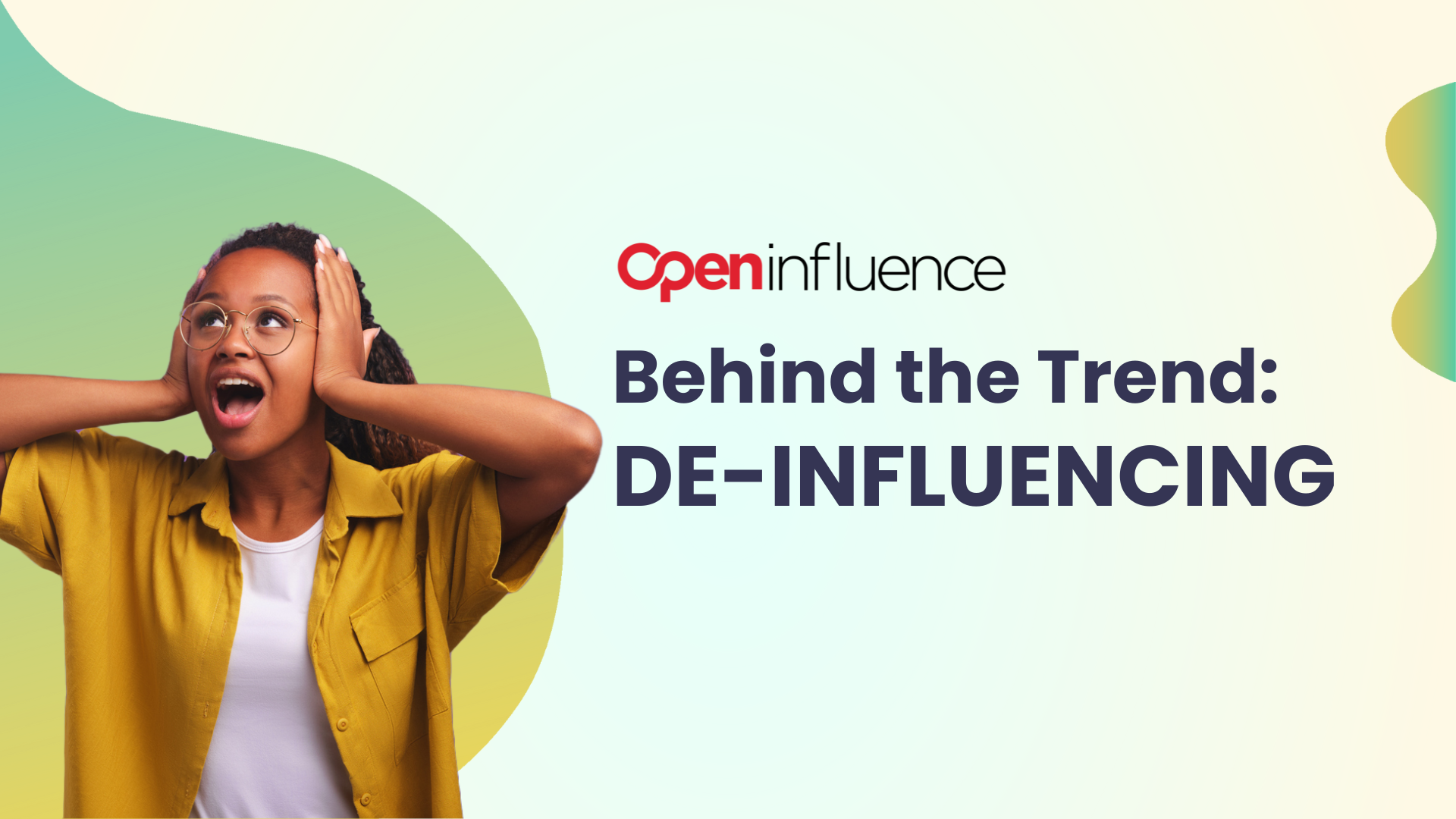Social media is vast, yet some videos, audios, and challenges go viral in an instant. Some trends last the test of time, while others vanish in a week. Trends move so quickly that it’s nearly impossible to predict, but while they’re in the spotlight, we can examine how they get there, why we love them, and why some may hate them. Let’s take a look behind our next trend, de-influencing.
De-influencing has sprung up in the past couple of years on TikTok, and it began gaining massive popularity in recent months. De-influencing’s fate as a long-standing trend is still to be determined, but as of now, it is making waves within TikTok creator marketing and garnering strong emotions from people–both love and distrust.
The Influencer’s Antagonist?
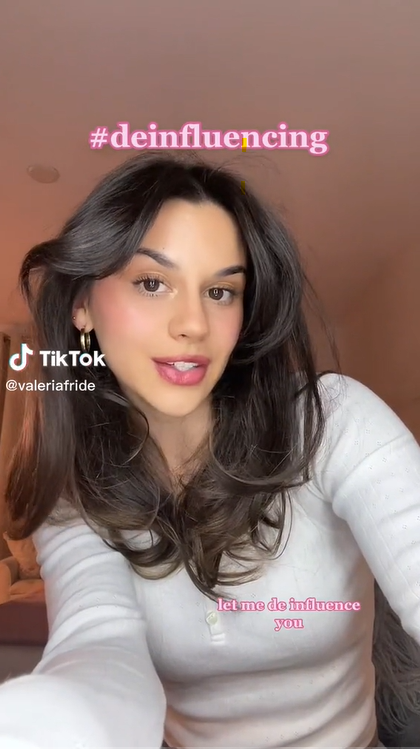
@valeriafride
The de-influencing trend that has emerged is virtually the opposite of influencing. This trend involves creators (influencers) flipping the switch and telling their followers which products are not worth the hype and should not be purchased.
Creators from a wide variety of niches, especially beauty and lifestyle, began jumping in and joining the trend to let their audiences know which products they bought, tried, and did not think lived up to the hype. Oftentimes, creators focus on products that have gone viral on the app, made the #TikTokMadeMeBuyIt list, or are coveted by mega-influencers and celebrities.
The trend has deterred many people from buying popular products and caused many to reconsider their spending habits.
This trend was born on TikTok and, while it has been recorded to be hashtagged and discussed as early as 2021, it did not become widely circulated until this January. Once it hit the mainstream, the trend and topic of de-influencing could not be ignored!
De-influencing, similar to #POV, primarily lives on TikTok, but the content translates to any platform that supports short-form video, such as Instagram, Facebook, and YouTube Shorts. However, the content fits in most naturally and has grown the fastest on TikTok due to its casual, unpolished, and authentic nature.
This is not the first time we have seen a trend where creators tell their audiences what not to buy: The anti-haul trend on YouTube in 2015 had the same message for audiences. Instead, anti-hauls told audiences what they would not be buying. The anti-haul trend gained a lot of traction on YouTube at the time, and some anti-hauls are still being made today, but the growth of de-influencing is quickly outpacing anti-hauls’ from over five years ago. 
On TikTok, #deinfluencing has 269M views and growing, #deinfluencer has 28M, and #deinfluencingproducts has 5.8M.
De-Influencing Deep Dive
There are many possible reasons for the explosion of de-influencing content. Let’s examine three possibilities:
Are Users Ready For Influencing’s Replacement?
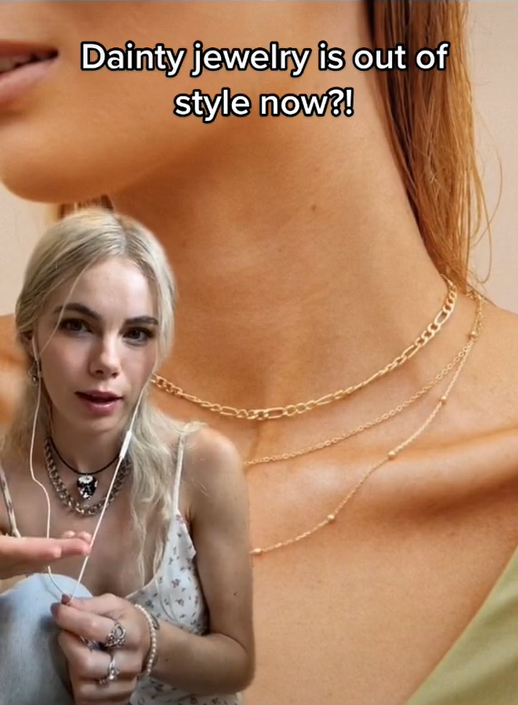
@nihaelety
De-influencing is a direct juxtaposition of influencing. Many speculate that it is a direct response to the explosion of #TikTokMadeMeBuyIt. Oftentimes when a trend has run its course, people will gravitate toward a trend that contrasts with the old one. We frequently see this in fashion influencer marketing, such as shifts from minimalism to maximalism or the shift from small classic jewelry to big statement piece jewelry.
On top of larger trends shifting over time, trends on social platforms move much more quickly than they did before social media. There are micro-trends within trends and new products and styles being shown to audiences every other day. While a plethora of trends gives consumers a never-ending amount of choices, it is tiring for consumers!
There are too many trends and too many products for people to keep up with, let alone choose from.
Too many choices causes decision fatigue, the idea that when you are constantly making decisions, you can become mentally tired, and your ability to make decisions worsens.
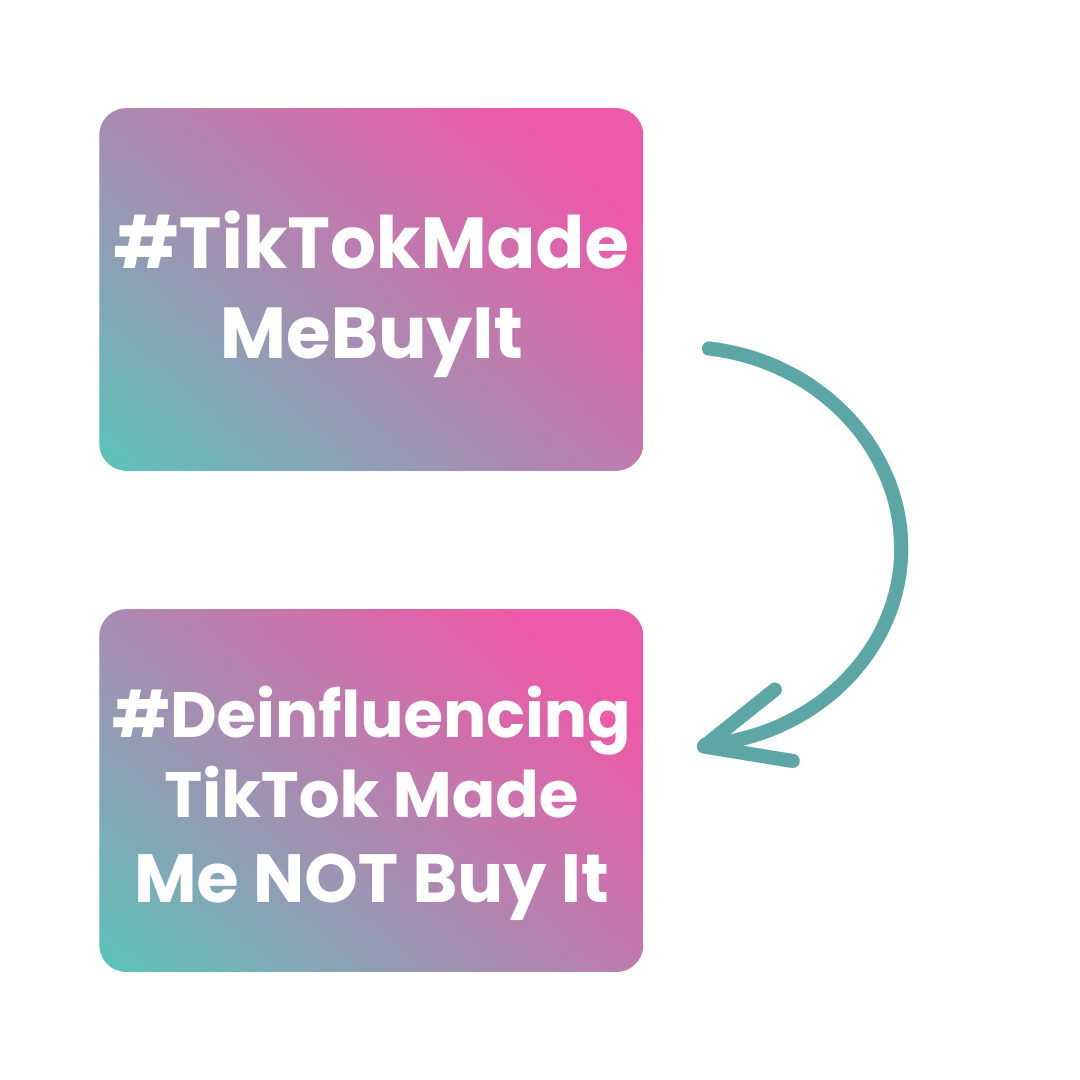 “If there’s a lot of different things in terms of what do I eat, what do I wear, what do I do with my day, especially on a day off, that can create stress. By the time the average person goes to bed, they’ve made over 35,000 decisions, and all of those decisions take time and energy, and certainly can deplete us,” says AMA member, Lisa MacLean, MD.
“If there’s a lot of different things in terms of what do I eat, what do I wear, what do I do with my day, especially on a day off, that can create stress. By the time the average person goes to bed, they’ve made over 35,000 decisions, and all of those decisions take time and energy, and certainly can deplete us,” says AMA member, Lisa MacLean, MD.
This phenomenon leaves people with brain fog, mental fatigue, and even physical fatigue, causing procrastination, impulsivity, indecision, exhaustion, low self-efficacy, and avoidance behaviors.
People spend large portions of their time scrolling on social media. When they do so, new products are shown to them every other month, week, or even day. Trends change so quickly that they barely have time with one product before the next is announced. De-influencing alleviates that mental stress.
Creators who de-influence provide audiences with relief and also earn their trust. They gain trust because they are not telling their followers what products to buy simply for the sake of a brand partnership, but because they actually like or dislike a product. This shows the authenticity that users like to see on the apps.
Does this mean influencing is phasing out? Absolutely not: It’s human nature for people to always look for mental shortcuts. Creators (influencers) help people find products that can be beneficial to them, just as other forms of ads have throughout time. And creators provide a human touch to product discovery. Additionally, social commerce sales (driven by creators) will still rise by 29.8% to $68.92 billion in the US this year.
What we do think is that some people are looking for a temporary pause or break from it, hence de-influencing.
Meets Gen Z Where They Are Mentally
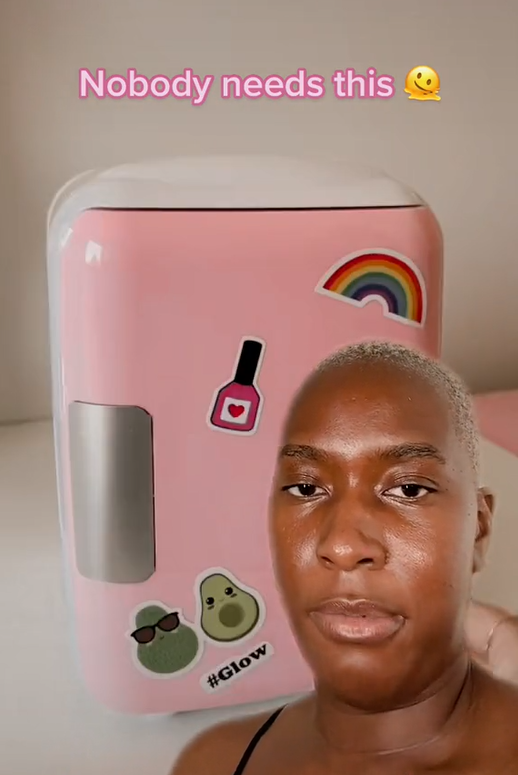
@isedasstudio
Gen Z is very conscious of sustainability. Seventy-five percent of Gen Z believe that buying sustainable products is more important than buying based on brand names. A prominent issue addressed by sustainability is overconsumption.
De-influencing by top Gen Z influencers speaks to those concerned with overconsumption. Often, de-influencers take a sustainability angle and talk to their audiences about why they shouldn’t buy certain products because they simply don’t need them. They debunk the latest viral products as something that is useless and will “end up in the trash.”
De-influencers who take this approach deter audiences from contributing to needless waste and remind audiences that they don’t need products solely due to the hype around them. Sometimes people need a reminder. This helps de-influencers resonate with like-minded audiences, typically Gen Z, who oppose products such as fast fashion and single-use plastics.
Alleviates Over-Spending in Tough Times
While inflation rates are down from the peak last summer (9.06%), moderate inflation is still affecting US consumers in many ways and damaging their spending power. Many people are suffering from cut hours and even job layoffs.
This is causing people to re-evaluate their spending habits out of both desire and necessity. People are thankful to creators who de-influence because it helps them see that they may not need to buy a product because it doesn’t live up to the reputation and, in turn, save their wallets.
When consumers are being told by a creator they love that a product is not worth it, it alleviates the FOMO they may experience from not hopping on the trend or caving and buying the product.
In the comment sections of many De-influencing TikTok posts, users thank TikTok creators for saving their wallets.
Do Brands and De-Influencing Go Together?
With the central theme of deterring consumers from buying items, it may seem like brands have no place in de-influencing, but surprisingly, they do!
Creators take many angles on de-influencing videos. Some creators de-influence brands and products that mislead consumers, some put on a sustainability lens, and some take a “try this, not that” approach.
Brands in niches outside sustainability can fit themselves into the last approach. They can position themselves as a brand to opt for over competitors. If done carefully and correctly, this can be used as a very powerful marketing strategy.
“Brands should be careful about leveraging the language in sponsored content (the hypocrisy might be called out by audiences). That said, I think there’s definitely a great opportunity within creator marketing specifically for brands that are inexpensive, environmentally sustainable, or otherwise eradicate the need for other superfluous products,”
– Zach Honer, Creative Strategist
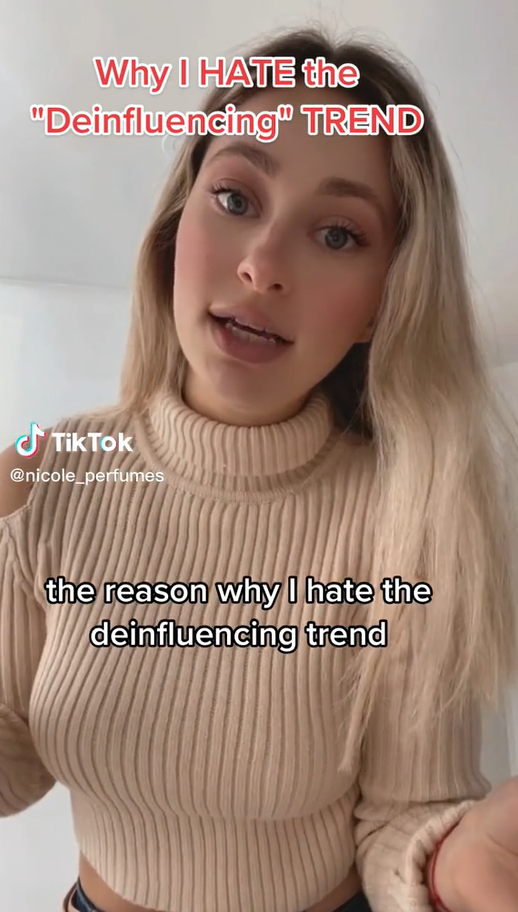
@nicole_perfumes
While there is an opportunity for brands to jump in, they should do so with caution. Just as with any trend that goes viral, there are some de-influencing haters. The skeptics dislike the concept that they are being told to substitute one product for another, in turn not saving money. They believe they are still being “influenced,” just in a different way.
Tips for making a valuable and successful de-influencing campaign:
- Do not openly bash other brands. Look at more general concepts or products to sway audiences away from.
- Use language carefully, making sure it does not mislead audiences and truly aligns with your brand’s message.
- Select creators who truly resonate with your product and have the trust of their followers.
- Take a cheeky or ironic approach.
- Recognize possible reasons people may be turning to this trend (sustainability or economic hardship), be mindful of this, and make sure your brand is aligned with the messages you convey.
“De-influencing is a tricky concept to jump into. I think the key is going to involve brands showing their support for specific creators, their lifestyles, and communities. They need to be careful and thoughtful about the lanes that they enter,”
– Gem Garcin, Senior Creative Strategist
Take a look at how some brands, like The Coconut Cult, have put their spin on de-influencing:
View this post on Instagram
De-influencing is a tricky trend to jump on, and must be done so thoughtfully and authentically. If done right, it can yield powerful results and trust from consumers. Would you consider hopping into de-influencing?
Open Influence’s creative marketing agency experts constantly stay on top of trends that will help you create winning campaigns. Reach out to us today to begin working on a fun and captivating campaign.

